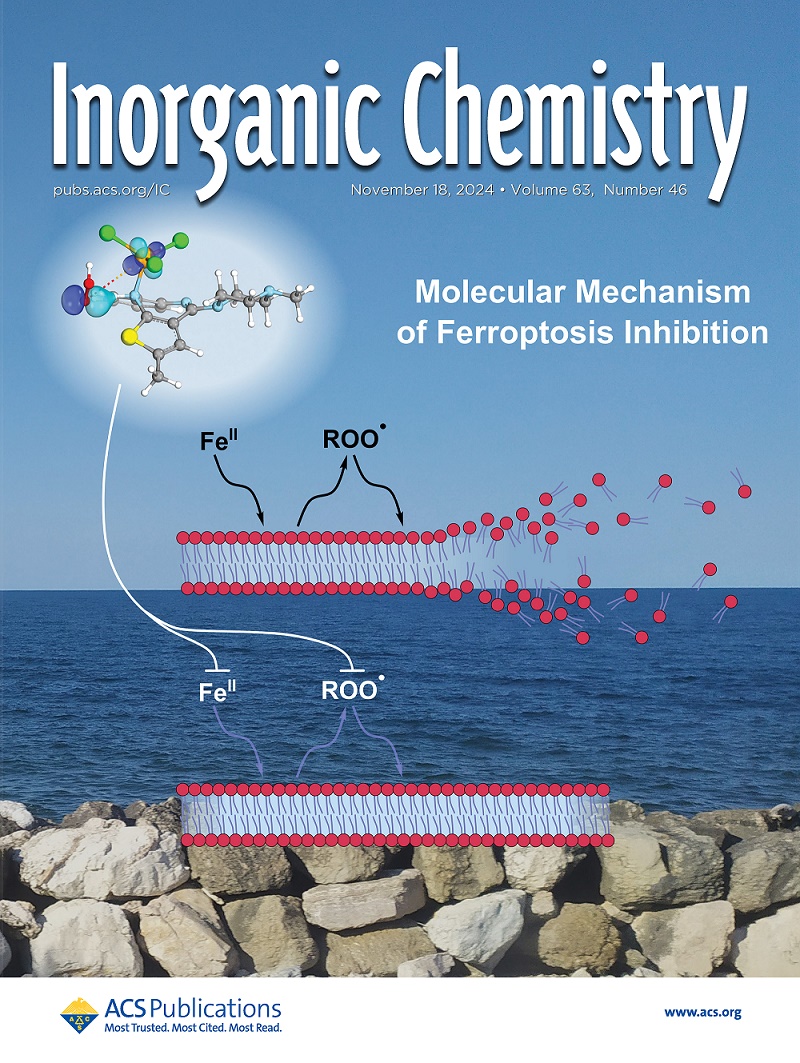锂化驱动相位工程解锁cr掺杂钽酸锌的宽带近红外发射
IF 4.3
2区 化学
Q1 CHEMISTRY, INORGANIC & NUCLEAR
引用次数: 0
摘要
结构相演化是调节材料性能的最强大工具之一,它使催化、介电学、光电子学和光致发光技术取得了进步。这样的演变可以显著提高Cr3+掺杂荧光粉的近红外(NIR)发射性能。在此,据我们所知,我们首次观察到锂化诱导ZnTa2O6荧光粉中Li+掺入驱动的连续结构相演化。随着Li+含量的增加,从正交ZnTa2O6 (Pbcn)到四边形ZnTa2O6 (P42/mnm),最终到三角形(Li0.5Zn0.5)TaO3 (R3c)。当掺杂Cr3+时,随着相的演化,近红外发射峰呈现递进的蓝移,从949 nm移动到885 nm,最终移动到862 nm。这种相演化也显著提高了光致发光强度、内量子产率(IQY)和光致发光热稳定性。我们的发现为设计高效的超宽带近红外荧光粉建立了一个新的范例,并为开发具有多种功能的钽酸盐基材料提供了基础,包括改善介电性能。本文章由计算机程序翻译,如有差异,请以英文原文为准。

Lithiation-Driven Phase Engineering Unlocking Broadband NIR Emission in Cr-Doped Zinc Tantalate
Structural phase evolution is among the most powerful tools for tuning material properties, enabling advancements in catalysis, dielectrics, optoelectronics, and photoluminescence. Such an evolution can significantly enhance the near-infrared (NIR) emission properties of Cr3+-doped phosphors. Herein, we present, to the best of our knowledge, the first observation of lithiation-induced continuous structural phase evolution in ZnTa2O6 phosphors, driven by Li+ incorporation. This evolution proceeds systematically from orthorhombic ZnTa2O6 (Pbcn) to tetragonal ZnTa2O6 (P42/mnm) and ultimately to trigonal (Li0.5Zn0.5)TaO3 (R3c) as the Li+ content increases. When doped with Cr3+, the NIR emission peak exhibits a progressive blue shift, moving from 949 to 885 nm and eventually to 862 nm, in tandem with the phase evolution. This phase evolution also yields significant enhancements in photoluminescent intensity, internal quantum yield (IQY), and photoluminescence thermal stability. Our findings establish a new paradigm for designing highly efficient ultra-broadband NIR phosphors and offer a foundation for developing tantalate-based materials with versatile functionalities, including improved dielectric properties.
求助全文
通过发布文献求助,成功后即可免费获取论文全文。
去求助
来源期刊

Inorganic Chemistry
化学-无机化学与核化学
CiteScore
7.60
自引率
13.00%
发文量
1960
审稿时长
1.9 months
期刊介绍:
Inorganic Chemistry publishes fundamental studies in all phases of inorganic chemistry. Coverage includes experimental and theoretical reports on quantitative studies of structure and thermodynamics, kinetics, mechanisms of inorganic reactions, bioinorganic chemistry, and relevant aspects of organometallic chemistry, solid-state phenomena, and chemical bonding theory. Emphasis is placed on the synthesis, structure, thermodynamics, reactivity, spectroscopy, and bonding properties of significant new and known compounds.
 求助内容:
求助内容: 应助结果提醒方式:
应助结果提醒方式:


